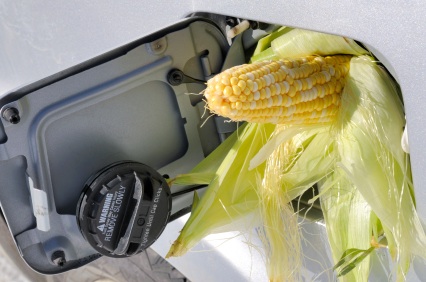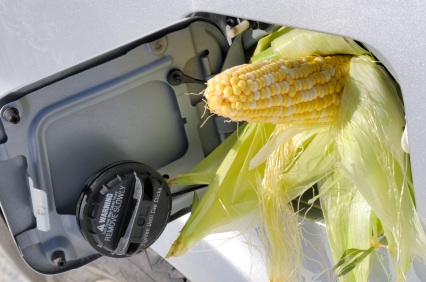I have been following the Great Ethanol Blend Wall fight for some time. In a nutshell, ethanol companies have been struggling mightily during the recession. In response, industry group Growth Energy petitioned the EPA to allow gasoline to contain up to 15 percent ethanol rather than the current 10 percent. This demand also had the strong support of the big farm groups as well as of USDA Chief Tom Vilsack himself. The auto industry, the marine industry, and just about anyone who sells a gasoline engine opposes the idea on the basis that at higher blends the corrosive effect of ethanol ruins engines. Having already delayed its response to Growth Energy’s petition once, the EPA was due to give a response on Dec. 1. And it was … a punt.
 In a letter [PDF] sent to Growth Energy co-Chairmen Wesley Clark and Jeff Broin, the EPA determined that more testing was needed before the agency could really know if a higher blend wall was safe for engines — testing that it hopes to complete by May. And so we must wait. But in the meantime, we can chew over the indications that the EPA will raise the blend wall in the worst way possible.
In a letter [PDF] sent to Growth Energy co-Chairmen Wesley Clark and Jeff Broin, the EPA determined that more testing was needed before the agency could really know if a higher blend wall was safe for engines — testing that it hopes to complete by May. And so we must wait. But in the meantime, we can chew over the indications that the EPA will raise the blend wall in the worst way possible.
Before I explain, I should observe that it appears the agency does indeed support raising the blend wall eventually. In the letter the EPA stated that “to achieve the renewable fuel requirements in future years, it is clear that ethanol will need to be blended into gasoline at levels greater than the current limit of 10 percent.” But in reality, that statement is simply a reflection of the Congressionally mandated requirement that 36 billion gallons of biofuels must be in use by 2022 — a goal that can’t be met if the blend wall stays at 10 percent. Congress could, if it so desired, reduce or eliminate the biofuels mandate and the problem would be solved. However, hell shows no indication of freezing over and thus we are stuck with a rising blend wall.
And how exactly will the EPA raise the blend wall once all the research comes in? Well, preliminary results of the EPA’s tests suggest that cars made after 2001 can handle E15. So:
Should the test results remain supportive, and provide the necessary basis, we would be in a position to approve E15 for 2001 and newer vehicles in the mid-year time frame.
Oh, but don’t worry about gas pumps suddenly putting out a fuel that could destroy your pre-2001 car, not to mention any lawn mover, boat, leaf blower, snow blower, etc. of any age. The EPA “will be taking steps to address fuel pump labeling issues to ensure consumers utilize the proper gasoline for their vehicle and equipment … “
How reassuring.
Does the EPA seriously think that approving what is in essence a new kind of fuel which is incompatible with the vast majority of engines out there and which will require its own pumps and distribution system is a good idea? Probably not. But their hands are effectively tied by the Renewable Fuel Standard production targets. In the end, as Phil Brasher in the Des Moines Register points out, the EPA (and the rest of us) will probably be bailed out by the unlikeliest of saviors: The gasoline refining industry. They hate the idea of E15 almost as much as the Sierra Club:
Refiners are saying they won’t put more ethanol into their gasoline unless Congress gives them protection from potential lawsuits from motorists or consumers who claim the ethanol hurt their engines.
Just because the agency can approve higher ethanol content, “that doesn’t mean anybody is forced to sell it,” said Charles Drevna, president of the National Petrochemical and Refiners Association.
And Brasher found at least one refiner who swears they won’t sell the stuff.
In sum, ethanol remains as big a regulatory mess as it is an environmental mess. The only good news, as far as I can tell, is that regardless of what the EPA does, E15 will remain, for the foreseeable future, a gleam in ethanol execs’ eyes. Would that it stays that way.



